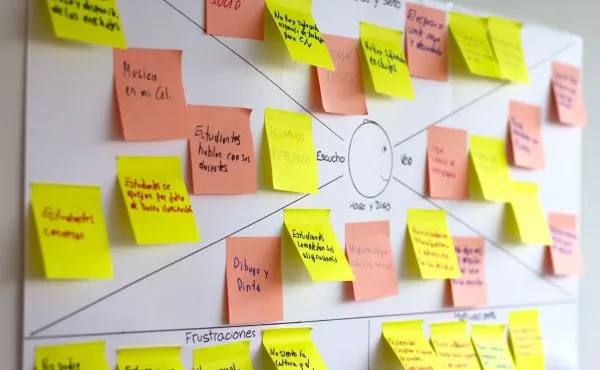
Content mapping is a strategic process of organizing and structuring content to meet specific goals, user needs, and the overall user experience. It is an essential foundation for successful content creation, distribution, and optimization.
What is a Content Map?
Content mapping is similar to creating a roadmap for your content. It explains how different pieces of content fit together, where they belong in the user journey, and how they contribute to meeting business objectives. Whether you're creating a blog, website, or marketing campaign, content mapping ensures agreement and relevance. Among the many uses for a content map are the following:
- Planning a content strategy
- Organizing a content library
- Evaluating the effectiveness of a content marketing campaign
- Identifying opportunities for improvement
There are numerous methods and tools available for creating content maps. Several widely used resources for producing content maps are:
Why is content mapping important?
Content mapping to help organize and structure their content can lead to improved user experiences and increased traffic. Creating a content map allows businesses to identify content gaps and ensure that all essential topics are covered. By doing so, they may improve the overall quality of their work and increase its relevance to their target audience.
Benefits of Content Mapping
Better structure and organization
Using a content map allows you to organize your information in a logical and understandable manner. This allows you to make your website more unified and user-friendly while also making it easier for visitors to find the information they require.
Better navigation
A content map can help improve the navigation on your website. You can help users find the information they need by outlining the connections between different pages and content parts.
Improved search engine optimization (SEO)
A content map can help you achieve better SEO by allowing search engines to crawl and index your website more easily. You can help search engines understand the purpose and content type of your website by providing a clear definition of the structure of your content.
Enhanced customer engagement
A content map can help users engage more by making it easier for them to find the information they need. Longer website visits, more page views, and higher conversion rates may result from this.
If you want to build a profitable website, you must think about creating a content map. One of the most important tools for structuring, organizing, and optimizing your content, which can help you improve your website in many ways,.
Why should you do content mapping?
Content mapping is a useful tool for managing and organizing your content more efficiently. It can also assist you in improving your content's discoverability, user accessibility, and search engine optimization (SEO). The following are some advantages of content mapping:
Better efficiency and organization
Content mapping can help you organize your information into a logical, accessible structure. This can boost your productivity and make it easier for you to find and manage information.
Improve search engine optimization (SEO)
Content mapping can help you improve your search engine rankings by making your material easier to find and access. Outlining your material can help you improve the relevance of your content to search engines and optimize your keyword usage.
Improved user experience
By making it simpler for users to locate the content they need, content mapping can assist you in improving the user experience. When you organize your information, you might find ways to enhance navigation and make your content more user-friendly.
If you're looking for a way to improve your content management and SEO, content mapping is important because it can help you achieve your goals.
How to Create a Content Map
1. Establish your objectives.
Establish your content marketing goals first. What do you hope to achieve with your resources? Are you looking to build thought leadership, increase brand awareness, generate leads, or improve website traffic? Understanding your objectives will help guide the content creation process.
2. Determine Your Target Audience
Understand who and what your target audience is interested in. Market research and buyer personas can help you better understand your target audience's needs, problems, and preferences. As a result, you will be able to create engaging and meaningful content for your audience.
3. Generate a list of content ideas.
Discuss content ideas that are relevant to your objectives and intended audience. Consider the topics, formats, and mediums that will best serve your audience and help you achieve your goals. Consider different writing formats, such as blog posts, videos, infographics, podcasts, and social media posts.
4. Sort and prioritize.
When you've created a list of potential content ideas, categorize them based on relevant subjects or themes. This will help you structure your content and ensure that it covers a wide range of topics that will be exciting to your readers. Sort the subjects based on their importance and relevance to your objectives.
5. Map Out Your Content
Create a structure or table to represent your content map visually. A spreadsheet or content calendar can help you organize your content ideas by category, topic, format, and publishing date. This will give you an in-depth understanding of your content strategy, allowing you to identify any gaps and make the necessary plans.
6. Organize Your Content
Use a structure or matrix to display your content map. Use a spreadsheet or content calendar to organize your content ideas by category, topic, format, and publication date. This will give you a clear view of your content strategy, allowing you to identify any gaps and make the necessary preparations.
Conclusion
The best way to organize your content strategy is to create a content map. It allows you to map out your content ideas, rank them based on their relevance to your goals and objectives, and visualize them. By following the steps in this tutorial, you can create a content map that aligns your content with the needs of your target audience and your company's objectives.
Always be adaptable and modify your content map based on feedback and performance. A well-organized content plan will allow you to create excellent content that connects with your audience, promotes interaction, and grows your company's goals.
Take your content mapping to the next level with our 360 marketing tool.
What to read next

